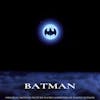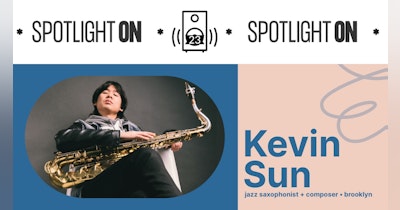The Unholy Trinity of Tim Burton, Danny Elfman, and... Prince?
Love them or hate them, comic book and superhero media have been an inescapable feature of our culture for decades.
The phenomenon reached a fever pitch in the 2010s with the staggeringly popular Marvel Cinematic Universe. And, while DC Comics kneels before Marvel in popularity at the box office, one thing DC has going for it in a big way is one of the most iconic characters in comicdom: ‘Batman.’
1989’s ‘Batman’, directed by auteur and professional weirdo Tim Burton, put the legendary character on the big screen in a way that nobody imagined before.
A commercial and critical success, ‘Batman’ became a cultural event in its own right. With colorful costumes and bold performances set against a neo-noir backdrop, the film treads a fine line between action-packed thrills and well-placed gags.
And creating the musical soundscape of Burton’s grimy Gotham City was pop superstar Prince.
Except he didn’t.
That would be film score then-up-and-comer Danny Elfman.
Let’s take a look at the character’s tumultuous history, the origin story of Burton’s ‘Batman’, and the tale of two very different musical visions of the same film.
Batman Begins
The earliest ‘comic books’ were simply Depression-era compilations of strips that had already appeared in other publications. People needed a reason to laugh during the Great Depression, and the humorous cartoons in periodicals and newspapers were cheap entertainment.
The first comic book as we’d recognize it today was printed in 1935. But it was with the first appearance of Superman on the cover of DC's ‘Action Comics’ #1 in 1938 that the superhero genre was born. The Golden Age of Comics had dawned.
‘Batman’ landed in 1939, appearing on the cover of ‘Detective Comics’ #27. In less than a year, the Caped Crusader earned his own spinoff with ‘Batman’ #1 in 1940.
As the Great Depression ground to a halt, comic books became even more popular. Stories of patriotic characters triumphing over evil were especially appealing during the years of WWII.
Much like early animation, the earliest live-action screen adaptations of comic book superheroes were short serials to accompany feature films. ‘Batman’ debuted with a 15-chapter serial in 1943 with 15 more in 1949.
Batman's Most Dangerous Foe Yet: The CCA
Movie serials were dimming in popularity by the early 1950s, and comic books themselves were descending into a post-war decline. Once-popular superhero titles gave way to detective, horror, romance, and other more fashionable subjects.
Part of this decline was driven by public outcry about the violence and subversion believed to be promoted by comic books.
In the face of going out of business altogether, the comics industry offered to self-police its more divisive content. The formation of the Comics Code Authority in 1954 effectively banned content that included crime, sex, occult themes, and others they deemed too edgy for publication.
Older heroes were given a makeover to stay relevant, shrewdly cloaked in the Space Age sensibilities of the 1950s.
Spaceships and aliens aside, Batman’s changes were especially noticeable.
In early comics, Batman seemed to revel in maiming or killing his enemies. But to ensure continued distribution of one of DC's most popular titles, the Dark Knight’s storylines became toothless and fanciful. And, while still allowing for the death of the very worst baddies, he grappled with his guilt afterward.
Sign o’ the Times
When Batman finally returned to the screen, it was for television instead of film. ABC's live-action ‘Batman’ debuted in 1966. And, despite DC’s appeal that it be a serious adventure program, it was a family-friendly affair in step with Batman's neutered comic book persona.
But did it have to be flat-out silly?
It was a huge success at the time, often remembered today for the many parodies of its famous surf-rock theme song and over-the-top cartoony fighting.
By the end of the third season, though, the show was struggling and was canceled in 1969.
This kid-friendly take on Batman lived on with the character’s first animated appearances in 1968, coinciding with the popularity of the live-action program. More animated appearances were to follow from 1973-1985, keeping the character fresh… At least in children’s minds.
But by the early 1970s, DC's newest generation of comic artists was already eager to wipe away the legacy of the campy ‘Batman’ TV series.
But the world was not yet ready to witness Batman’s darker nature.
Batman Returns
DC had a superhit with 1978’s big screen juggernaut, ‘Superman’. The chatter from the late 1970s through the mid-1980s was that it was only a matter of time until the Caped Crusader returned to theatres as well.
Comics readers enthusiastically followed right along as Batman took a turn toward the vigilante of yore.
But the general public was still most familiar with the character’s lighthearted TV antics. The studio was keen on restoring the Dark Knight’s dark side… Who could possibly direct something both dark and fun?
The answer? A 27-year-old freshman director by the name of Tim Burton.
Burton struck gold for Warner Bros. in 1985 when he turned a $7 million budget into a $40 million payday with his first feature-length film, ‘Pee Wee’s Big Adventure’. Whimsical, visually arresting, and endowed with a macabre wink, Warner Bros. realized they might have struck gold themselves with the young director.
Still, Warner Bros. wanted to play it safe.
They only fully got behind their chosen bat-director after the unexpectedly high returns of Burton’s sophomore feature, 1988’s ‘Beetlejuice.’ The surprise hit also proved to be a perfect vehicle for Burton to show off his morbidly fun-loving aesthetic.
With so much at stake, though, the studio wasn’t just going to let the young director run wild with a blockbuster-level property.
The studio was watchful of every decision.
Burton's choice of comedic actor Michael Keaton (who played the titular character in ‘Beetlejuice’) as his Batman was met with considerable skepticism.
Also drawing skepticism was his choice of composer, Danny Elfman.
From New Wave to Bat Cave
Film scores weren’t what Danny Elfman was primarily known for in the 1980s… His only previous experience scoring movies was for his brother Richard’s cult film ‘Forbidden Zone’, released in 1982.
But as the leader of the semi-successful new wave band Oingo Boingo, Elfman’s own ghoulish quirkiness was front and center. Among those who developed a love for Elfman’s early work was Paul Reubens, aka ‘Pee Wee Herman.’
It was Reubens who brought the 33-year-old Elfman to the table for ‘Pee Wee’s Big Adventure.’
Burton required no convincing.
While Elfman was certain that scoring the film would be the end of his career, it kickstarted it in a whole new way. Burton found a kindred spirit in Elfman and brought him along for another win with ‘Beetlejuice’... And again for ‘Batman.’
Warner Bros. balked.
Sure, Elfman had scored two hits in a row, but he was still just a middling rock musician with no formal training. Plus, both previous films had a strong comedy angle. They felt ‘Batman’ needed the gravitas of a more established composer.
And, hedging their bets, Warner Bros. decided to pull in a major pop star to attach to the film as well.
Prince just happened to be on Warner Bros.’s payroll with a recording contract to fulfill… And empty pockets.
Prince… Or Pauper?
It’s hard to imagine Prince, in the prime of his career, being down on his luck.
While he’d become a household name after his megahit 1984 album, tour, and movie ‘Purple Rain’, his financial choices started catching up soon after. He’d poured enormous sums of money into the movie and tour. Plus, his 1986 cinematic follow-up, ‘Under the Cherry Moon’, floundered in theaters.
His record sales were becoming inconsistent. A hit in 1987 and a flop in 1988 revealed how quickly he was burning through cash. After a reality check from his new manager, Prince realized he needed to release fresh material without assuming all the risk.
A Prince fan himself, Burton had already plugged in some of Prince’s music as placeholders in an early cut of the film… But not with enthusiasm. His vision of Gotham was one removed from time, and he felt like pop music would date it.
The studio wasn’t sympathetic.
When approached about contributing, Prince jumped at the opportunity.
It helped that Prince was a huge Batman fan. And, after seeing the rough cut, he whipped up an entire concept album in just a month.
It was an unusually collaborative effort. Prince was known for doing things his way and bristled at being told how to create. Whether it was his love of Batman or his dwindling bank account, he actively sought out Burton’s feedback.
Warner Bros. leaned heavily on Prince’s involvement to create advance buzz for the film. A massive hit, the soundtrack told the story from each of the characters’ points of view and featured dialogue from the movie itself. The album perched at #1 for six weeks with four singles charting, including the #1 hit ‘Batdance.’
Prince wound up making a ‘Prince’ album after all, and it put him right back on top.
And, of course, it helped satisfy his recording contract obligations.
It was a perfect storm of opportunity for all involved… Except Danny Elfman.
Batman versus Elfman
Prince got the gig writing a soundtrack “inspired by” the movie. Elfman got the gig writing the movie’s score.
But when it became clear that the studio expected Elfman to compose the score with Prince, he left the project… Not for lack of appreciation of Prince as an artist, but because Elfman didn’t believe Prince was the right artist.
Part of the problem was that “superhero music” wasn’t yet defined.
‘Superman’ was the last big superhero franchise. Nobody wanted a knock-off of John Williams’ theme, least of all Elfman. The triumphant high spirits of the ‘Superman’ theme would be an ill fit for the Dark Knight.
Elfman knew what he wanted. He heard the score in his head, but he hadn’t yet translated it into something that could be demonstrated.
And rather than give up creative control and become an arranger of pop tunes, Elfman departed.
He immediately regretted it. Certain that he’d single-handedly destroyed his career, he fell into a deep depression.
That is, until about a month later… Things had stalled with Prince being the only composer working on the film. Elfman was called back in to write the score without having to collaborate with Prince.
Despite having creative control, Elfman was still struggling to make his case with the movie’s producers. It wasn’t until Burton coached him through a presentation of his music did Elfman reveal the now-iconic opening titles.
The effect was instantaneous. Producer Jon Peters began mimicking an orchestra conductor, and Burton gave Elfman two thumbs up.
It was a slam dunk.
Wearing his influences on his sleeve, Elfman’s score is strongly evocative of the rousing orchestral themes of the Golden Age of Hollywood. It has a sweeping grandiosity and insistence, making it easy to imagine Batman rushing to the rescue of his fellow Gothamites.
The Dark Knight Rises
‘Batman’ was not just a hit, but the movie event of the summer. Indeed, it set multiple records and was the top domestic earner of the year.
And, of course, Burton was spot-on with his casting and score choices. Often compared to Hitchcock and Herrmann, the Burton-Elfman partnership is one of the most successful long-term collaborations between a film director and a composer.
For better or worse, ‘Batman’ changed Hollywood. It’s not an exaggeration to say that 1989’s ‘Batman’ created the playbook that subsequent superhero films would revisit again and again.
As far as Prince’s music making it into the movie, very little did… But the album sold 11 million copies and helped guarantee the movie would be a hit.
And, while Elfman’s score was overshadowed by Prince and released later, there can be little doubt about which one made ‘Batman’ the classic it is today.
###






